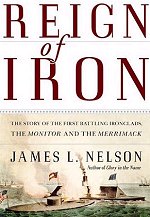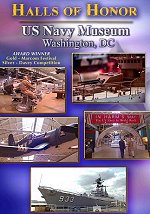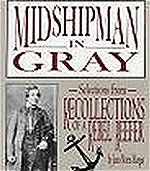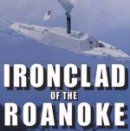Fort Sumter fired on by Confederate batteries -- the conflict begins.
19 April
President Lincoln issued proclamation declaring blockade of Southern ports from South Carolina to Texas.
20 April
Norfolk Navy Yard partially destroyed to prevent Yard facilities from falling into Confederate hands and abandoned by Union forces.
24 May
Commander S. C. Rowan, U.S.S Pawnee , demanded the surrender of Alexandria, Virginia; an amphibious expedition departed Washington Navy Yard and occupied the town.
3 August
John LaMountain made first ascent in a balloon from Union ship Fanny at Hampton Roads to observe Confederate batteries on Sewell's Point, Virginia.
29 August
Union forces under Flag Officer S. H. Stringham and General B. F. Butler received the unconditional surrender of Confederate-held Forts Hatteras and Clark, closing Pamlico Sound.
1 October
Confederate naval forces, including CSS Curlew , Raleigh , and Junaluska , under Flag Officer W. F. Lynch, CSN, captured steamer Fanny (later CSS Fanny ) in Pamlico Sound with Union troops on board.
Naval forces under Flag Officer S. F. Du Pont captured Porr Royal Sound.
U S S Tyler , Commander H. Walke, and USS Lexington , Commander R. Stembel, supported 3,000 Union troops under General Grant at the Battle of Belmont, Missouri. and engaged Confederate batteries along the Mississippi River
8 November
USS San Jacinto , Captain C. Wilkes, stopped British mail steamer Trent in Old Bahama Channel and removed Confederate Commissioners James Mason and John Slidell.
11 November
Thaddeus Lowe made balloon observation of Confederate forces from Balloon-Boat G. W. Parke Curtis anchored in Potomac River.
12 November
Fingal (later CSS Atlanta ), purchased in England, entered Savannah laden with military supplies -- the first ship to run the blockade solely on Confederate government account.
21 December
Congress enacted legislation providing for the Medal of Honor.

The H. L. Hunley
The Secret Hope of the Confederacy
On the evening of February 17, 1864, the Confederacy H. L. Hunley sank the USS Housatonic and became the first submarine in world history to sink an enemy ship. Not until World War I "half a century later” would a submarine again accomplish such a feat. But also perishing that moonlit night, vanishing beneath the cold Atlantic waters off Charleston, South Carolina, was the Hunley and her entire crew of eight
Kindle Available

Reign of Iron: The Story of the First Battling Ironclads, the Monitor and the Merrimack
The first ironclad ships to fight each other, the Monitor and the Virginia (Merrimack), were the unique products of American design genius







